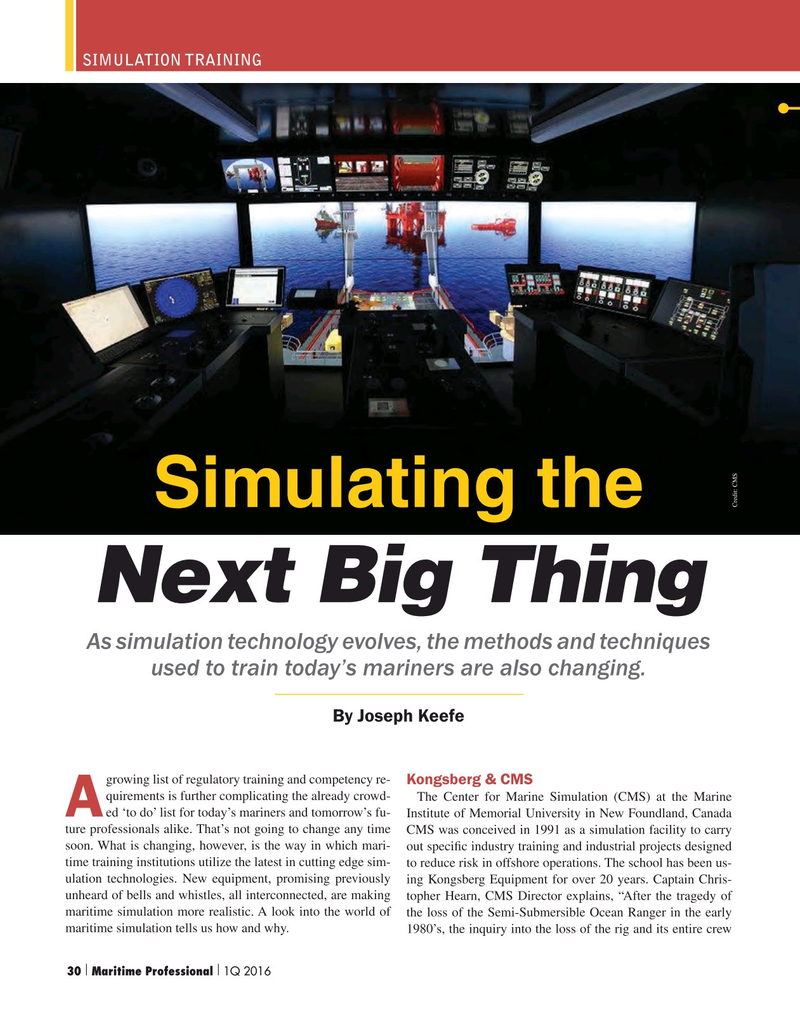
Page 30: of Maritime Logistics Professional Magazine (Q1 2016)
Maritime Training and Education
Read this page in Pdf, Flash or Html5 edition of Q1 2016 Maritime Logistics Professional Magazine
SIMULATION TRAINING
Simulating the
Credit: CMS
Next Big Thing
As simulation technology evolves, the methods and techniques used to train today’s mariners are also changing.
By Joseph Keefe growing list of regulatory training and competency re-
Kongsberg & CMS quirements is further complicating the already crowd- The Center for Marine Simulation (CMS) at the Marine ed ‘to do’ list for today’s mariners and tomorrow’s fu- Institute of Memorial University in New Foundland, Canada A ture professionals alike. That’s not going to change any time CMS was conceived in 1991 as a simulation facility to carry soon. What is changing, however, is the way in which mari- out speci? c industry training and industrial projects designed time training institutions utilize the latest in cutting edge sim- to reduce risk in offshore operations. The school has been us- ulation technologies. New equipment, promising previously ing Kongsberg Equipment for over 20 years. Captain Chris- unheard of bells and whistles, all interconnected, are making topher Hearn, CMS Director explains, “After the tragedy of maritime simulation more realistic. A look into the world of the loss of the Semi-Submersible Ocean Ranger in the early maritime simulation tells us how and why. 1980’s, the inquiry into the loss of the rig and its entire crew 30 Maritime Professional 1Q 2016| | 18-33 Q1 MP2016.indd 30 2/29/2016 10:46:30 AM

 29
29

 31
31
